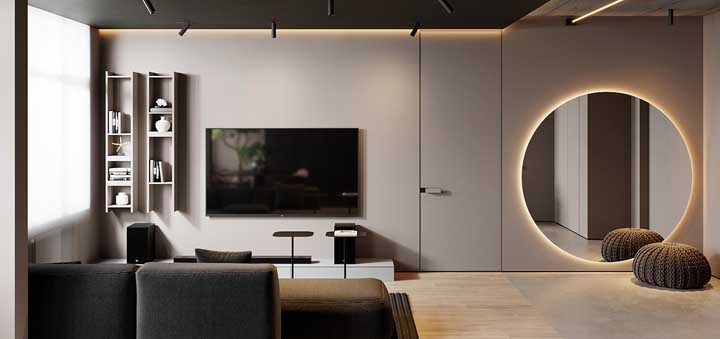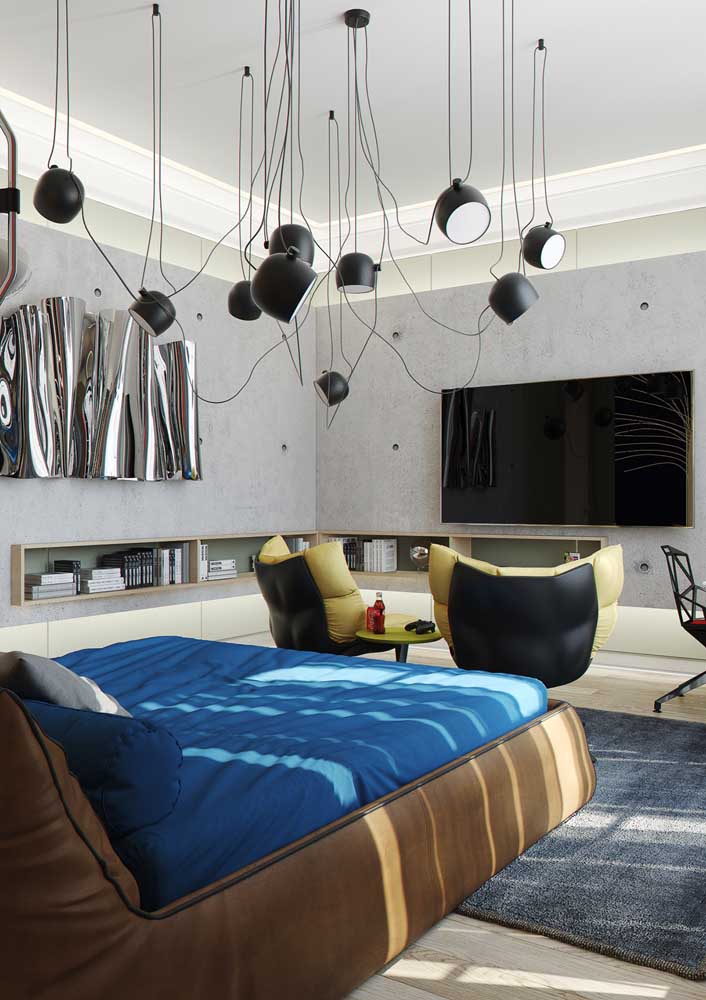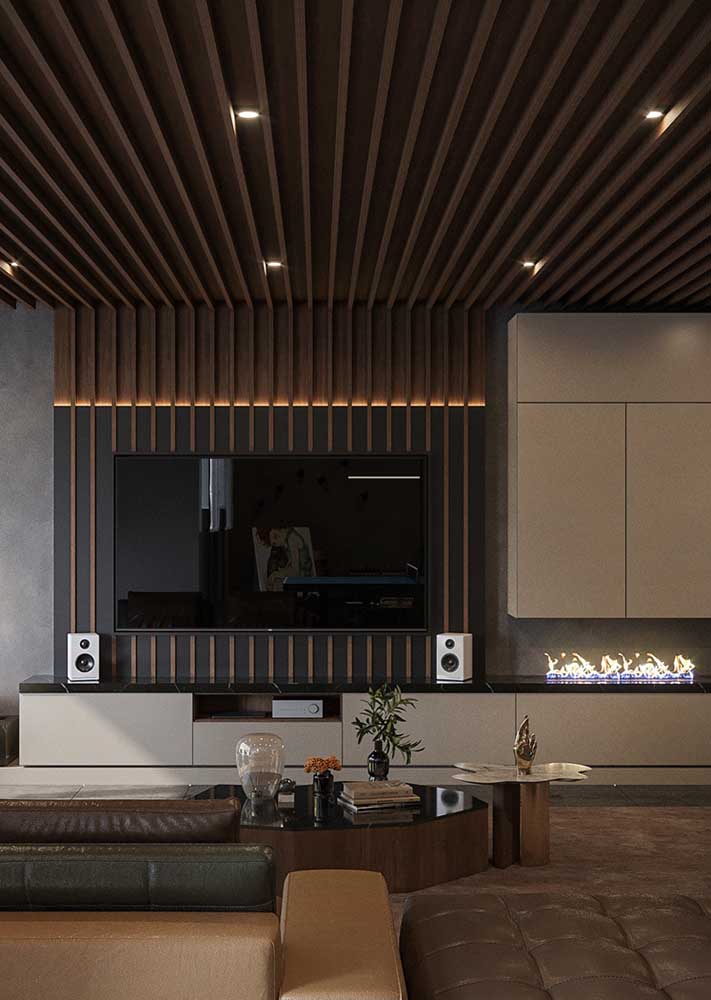Table of Contents

Which lamp to use? Where to light? How much light is needed for each environment? If all these questions are going through your head, then you need a lighting project.
But, what is a lighting project?
A lighting project is the basis for installing adequate lighting, whether in homes, businesses or industries.
From it, it is possible to define the most appropriate degree of luminosity for each environment, taking into account several aspects, including the routine and needs of residents, customers or employees of a company.
Why is it important to have a lighting project?
A good lighting design is important to offer comfort, functionality and safety to the environments.
Inside a house, the lighting project assists residents in daily activities, provides relaxing environments and also contributes to safety.
In stores, the lighting project offers a better service to customers, valuing, for example, items in a showcase.
In industries, lighting design is essential to ensure the safety and productivity of employees.
How to make a lighting project: aspects that need to be considered
Natural light
Natural light is the first thing to take into consideration before starting the lighting project.
It is important to assess all natural light inputs from the environment and how it behaves throughout the day.
Here, there are window openings, doors, hollow elements, glass blocks, skylights and translucent tiles.
From this information it is possible to measure the need for lighting for each environment.
Right lamp
There are dozens of different lamp models, from the old incandescent lamps (which have been out of use for some time) to the most technological and efficient ones manufactured in LED.
To make the right choice, prefer those that consume less energy, as they are more sustainable and economical, as is the case with LED lamps.
Then, it is important to assess the degree of brightness of the lamp, that is, if it can cope with illuminating the desired environment.
Some lamps, such as carbon filaments, which are very popular at the moment, end up having a more decorative use, since they illuminate very little.
Another important point: the lamps should be chosen by the amount of lumens (lux) and not by the watts (W) indicated on the packaging.
The watts serve only to inform how much electricity the lamp consumes and not its lighting capacity.
An LED lamp that consumes 10W, for example, has the same efficiency as a fluorescent lamp that consumes 100W.
As a result, the recommendation is always to look for lamps with low watt value and high lumen value.
The recommendation for lumens per square meter of home environment is as follows:
Living and dining rooms – 100 to 200 lux
Reading rooms (or other similar environment) – 300 to 700 lux
Kitchen – 200 to 500 lux
Room (general light) – 100 to 200 lux
Bathroom (general light) – 200 to 300 lux
Home office (desk) – 300 to 500 lux
Stairs, corridors, garage and entrance hall – 75 to 150 lux
As you can see, the environments used for rest and leisure require a smaller amount of lighting than those made for activities, such as the kitchen and bathrooms.
To exemplify: if your living room is 8 square meters, then the amount of lux needed is 800 to 1600 lux.
However, this luminance index should not be concentrated in just one place, such as the ceiling lamp, for example. It must be spread and diluted by the environment, so that the entire area is efficiently lit, bringing comfort and functionality to the entire room.
Light steering axis
Now that you know how to choose the lamp it is important to know how to direct it within the environments. In general, this targeting can be done in three main ways:
Direct lighting
Direct light, as its name suggests, is one that directly illuminates something, such as an office table, a kitchen counter or a reading chair.
This type of light is indicated for when there is a need for a greater amount of lighting to perform activities.
The best way to bring direct lighting to your surroundings is by using pendant or table lamps.
Indirect lighting
Unlike direct light, indirect light is used to highlight and enhance architectural details, works of art or decorative pieces.
This type of lighting is commonly used on the ceiling with directed spots, sconces or LED strips.
Diffuse lighting
Diffuse lighting is the most popular of all and is most often characterized by the use of a central lamp on the ceiling.
This type of light creates a soft illumination, without producing shadows or obscuring the vision.
Light temperature
The temperature of the light makes all the difference in the lighting design. This is because the sensory effects are altered depending on the color emitted by the lamp.
White lamps, considered cold or bluish, are indicated for environments where concentration and attention is required. Yellow lamps, considered warm, are recommended for relaxation environments, since they bring comfort and welcome.
Glare and shadow
Another fundamental detail that you must take into account when preparing the lighting project is the incidence of glare and shadow caused by the lighting. Both must be avoided at all costs.
To avoid glare, it is recommended that the light be installed above eye height and, preferably, not to reflect on metallic objects, glass and mirrors.
The shadow is produced when the lamp is installed at the wrong height and ends up focusing on furniture or other larger objects.
Lighting vs. environments
Living room and dining room
In living rooms and dining rooms, comfort should be the watchword. For this, prefer yellow lamps installed indirectly and a diffused light on the ceiling. To complement the lighting, use pendant lamps on the dining table or side table.
bedrooms
The rooms also need comfort. Therefore, the use of yellow lamps is also recommended. A good tip is to bet on lamps next to the head of the bed.
Toilets
Bathrooms need direct lighting to favor common activities in this environment, such as hair styling, shaving and makeup.
The ideal is to have diffused light on the ceiling and direct lighting on the countertop over the mirror.
The lavatories, in contrast to the bathrooms, can have a more cozy and soft light.
Kitchen
The kitchen needs good lighting when preparing food. Because of this, the most common is the use of diffuse lighting on the ceiling that prevents the formation of shadows. But to bring a more cozy touch to the environment, also install indirect lights.
Check out 65 ideas for lighting projects below to get inspired:
01. Residential lighting project with indirect light to bring coziness.

02. Lighting design for the double bedroom.

03. Luminotechnical project with natural light.

04. Lighting project for the kitchen: indirect light to enhance the joinery.

05. Special lighting for the stairs too!

06. Lighting project even contemplates the shower.

07. The decorative style is also present in the lighting design.

08. Cozy light for the living room.

09. Indirect lighting at the headboard brings comfort to the couple’s bedroom.

10. Modern LED lamps bring the necessary lighting to the office.

11. Direct and diffuse light for the lighting design of this kitchen.

12. The lobby also deserves special lighting.

13. Warm lights to relax.

14. Cold light next to the mirror is essential.

15. In the living room, diffused and indirect light brings comfort, without losing functionality.

16. Direction lights: ideal for driving and guiding.

17. Natural light during the day. At night, a track of lamps.

18. Luminaires are an important part of the residential lighting project.

19. For a modern and youthful decoration, it is worth betting on colored lights.

20. Each environment requires a more appropriate type of lighting.

21. A modern way to light up the room.

22. Indirect and creative lighting on the hall wall.

23. Yellow lights for a cozy bathroom.

24. Diffused lights do not create shadows and illuminate smoothly.

25. Cold lights to assist activities on the kitchen counter.

26. Cobogós must be considered in the lighting project.

27. Lighting project enhancing the natural lighting of the kitchen.

28. Warm, indirect light makes the home office more cozy.

29. Beautiful fixtures for a bespoke project.

30. Illuminated signs also enter the lighting project.

31. Lights to enhance the collection of objects.

32A. Chic black bathroom with indirect lighting design.

32B. In the bath area, the color of the wall joins the color of the lamp to offer maximum comfort.

33. It may seem like just a detail, but it is the lighting design that guarantees all the differential of the environment.

34. Lights to show the way.

35. Light effects for a modern home.

36. Direct light on the kitchen counter: practical on a daily basis.

37. The intimate effect of lamps!

38. Luminotechnical design with diffused lights on the ceiling.

39. Blink blinks also counts.

40. Lighting project to enhance decoration.

41. Carbon filament lamps: more decorative than functional.

42. Lampshade and lamps complete the main lighting.

43. Art-shaped lights!

44. Clean, modern and minimalist lighting project.










